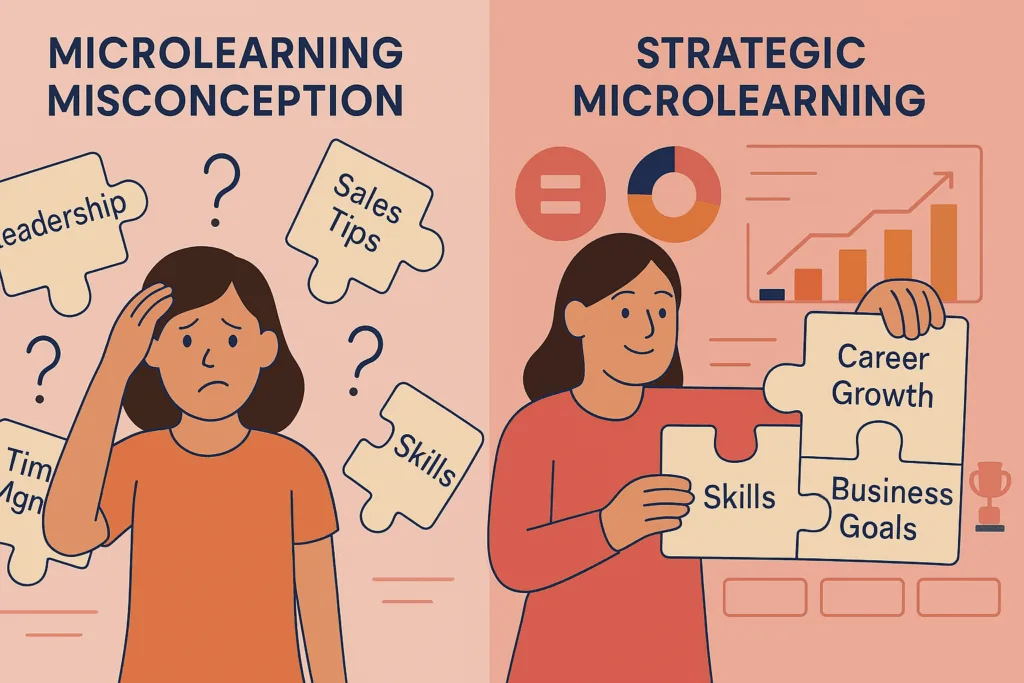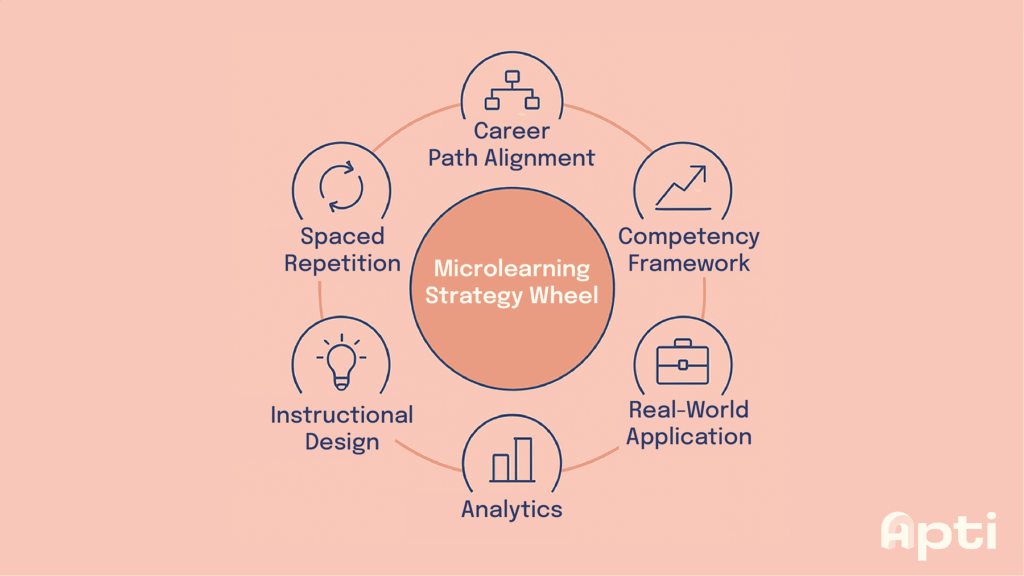
Microlearning for skill development has become a popular strategy in corporate training, and it’s easy to see why. With packed schedules and shrinking attention spans, today’s workforce needs fast, flexible, and accessible learning solutions. Microlearning offers just that: bite-sized, on-demand content that’s easy to consume.
But while microlearning is gaining momentum, many organizations still struggle to see long-term improvement in performance or capability.
So, what’s missing?
Why Microlearning for Skill Development Needs Strategy
At its core, microlearning for skill development delivers key concepts in short, focused bursts. It’s designed to promote knowledge retention, boost engagement, and enable employees to apply what they’ve learned directly on the job.
However, the effectiveness of microlearning doesn’t come from brevity alone. True impact comes from aligning microlearning with learning and development best practices and broader business objectives.
The Microlearning Misconception: Short ≠ Effective
One common mistake is assuming shorter content automatically leads to better outcomes. Microlearning isn’t just about making content smaller—it’s about making learning smarter.
Without context, structure, or integration into a larger skills framework, microlearning can feel disjointed. Learners may complete a quick module, but without a connection to a bigger learning journey, they often struggle to apply that knowledge in meaningful ways.
To avoid this pitfall, microlearning must be purposefully designed to support skill acquisition, growth, and performance.

The Apti Microlearning Strategy Wheel highlights the six essential components that drive long-term skill development and learner impact.
Embed Microlearning Into Your L&D Strategy
To drive sustainable results, microlearning should not stand alone. It should be integrated into your broader learning and development strategy. This includes linking every microlearning asset to:
- Competency frameworks
- Career development paths
- Organizational goals
When learners understand the “why” behind their training and how it fits into their career trajectory, motivation and retention soar.
This approach reflects one of the most important learning and development best practices: aligning learning with measurable business outcomes.
Reinforcement: The Secret to Long-Term Skill Building
Spaced repetition is critical to effective learning, yet many microlearning programs lack reinforcement mechanisms. Delivering content once and moving on simply isn’t enough.
By incorporating reinforcement loops, L&D leaders can ensure learners revisit and apply concepts over time, turning one-time exposure into lasting behavior change.
Instructional Design > Technology
Modern learning platforms are full of promise—beautiful interfaces, intuitive navigation, and gamified experiences. But great tech can’t compensate for poor instructional design.
To make microlearning for skill development truly effective, the foundation must be built on sound design principles, including:
- Clear learning objectives
- Real-world application scenarios
- Opportunities for reflection and practice
When tech is paired with thoughtful design, microlearning becomes not only engaging but transformational.
Match the Modality to the Mission
Microlearning excels at reinforcing knowledge, teaching step-by-step tasks, and aiding recall. But it isn’t a one-size-fits-all solution.
For more complex outcomes, such as developing leadership capabilities or fostering strategic thinking, other modalities may be more effective. Cohort-based learning, mentoring, and blended learning experiences are often more effective for deep learning and behavioral change.
The key is to create a balanced learning ecosystem that uses the right modality for the right outcome.
Use Data to Drive Continuous Improvement
One of the most powerful learning and development best practices is leveraging data to improve outcomes. Microlearning programs should be no exception.
Track:
- Engagement
- Completion rates
- Skill acquisition and behavior change
Use analytics to adjust your strategy in real time. Implement feedback loops and adaptive learning pathways to ensure that your content stays relevant and results-driven.
The Bottom Line: Make Microlearning Work for You
When strategically designed and properly integrated, microlearning for skill development is more than a learning trend; it’s a high-impact tool that can drive real business results.
At Apti, we help L&D teams implement learning and development best practices that make microlearning a catalyst for measurable growth. From content design to delivery and optimization, we connect the dots between microlearning and organizational performance.
Ready to take your microlearning strategy to the next level?
Reach out to us at contact@hiapti.com—we’d love to share proven approaches that are working for L&D leaders like you.